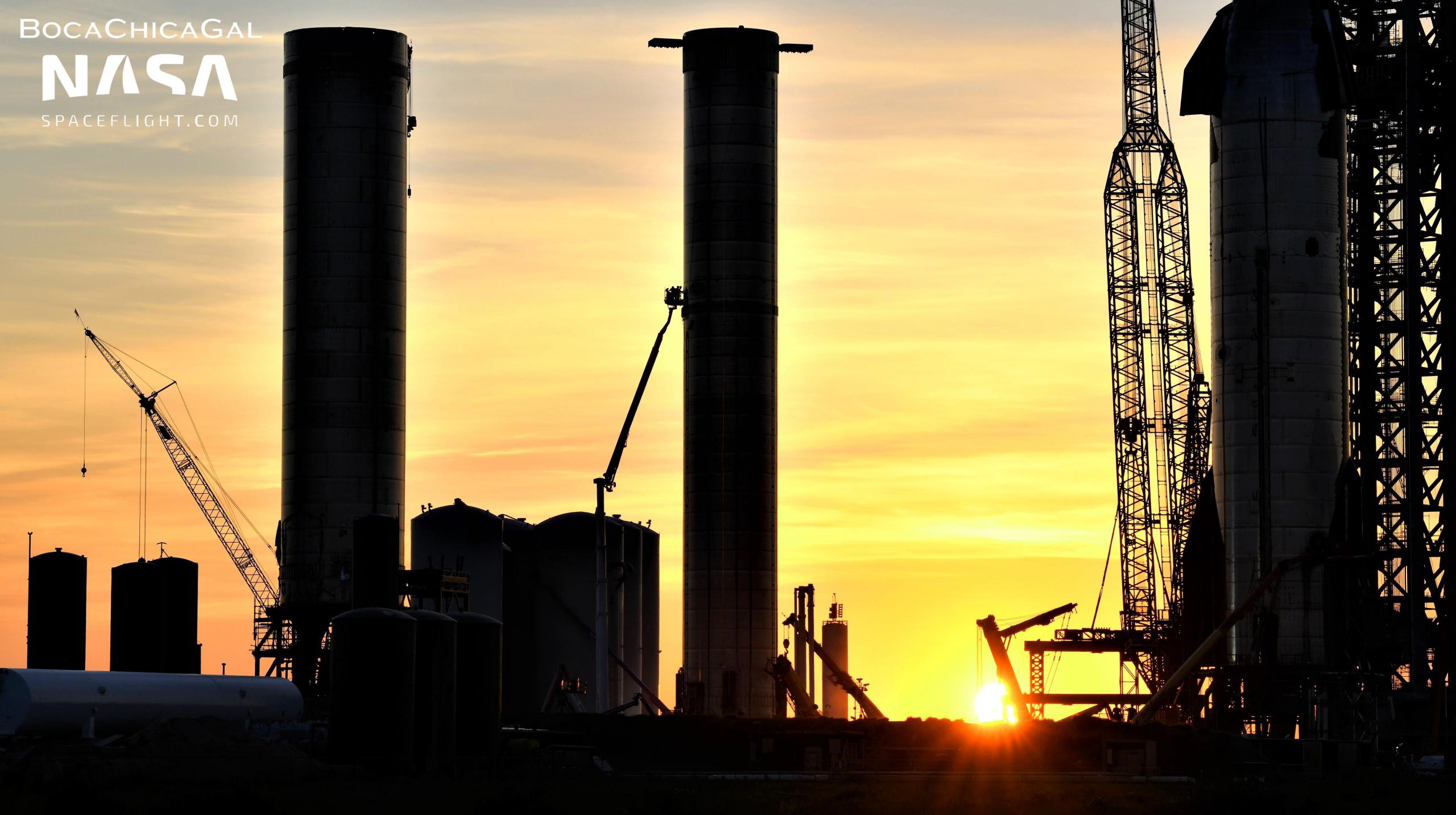
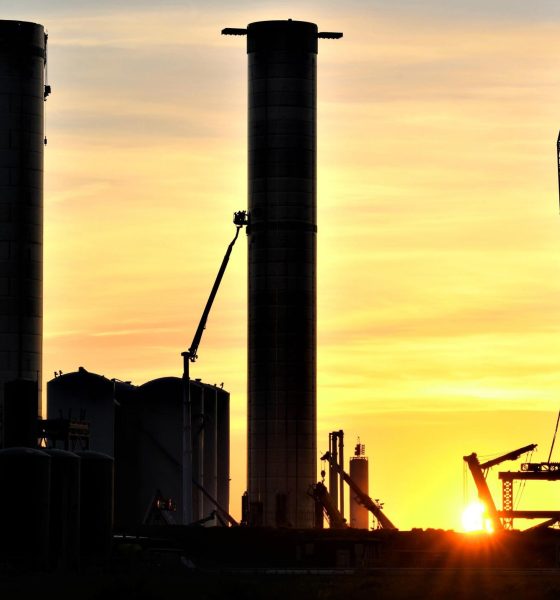
News
SpaceX preparing Super Heavy, Starbase for booster’s next steps
Amid a flurry of deliveries and work on several new Starship boosters, SpaceX is preparing the first truly finished Super Heavy for its next steps.
Partially completed by early September, Super Heavy Booster 4 (B4) supported SpaceX’s iconic ‘full stack’ fit test back on August 6th before returning to the build site but has mostly just floated around Starbase’s launch and test facilities in the seven weeks since its second trip to the pad. On September 10th, CEO Elon Musk himself suggested that SpaceX had plans to static fire the booster as early as mid-September – more than six weeks ago. Obviously, nothing even approximating Super Heavy testing transpired. Instead, at least relative to rapid-fire Starbase operations in the two years prior, SpaceX has almost absentmindedly worked on the booster, mostly completing partially-finished wire runs that run its full 69m (~225 ft) length.
In the last few weeks, though, the type of work being done on Super Heavy B4 has changed.
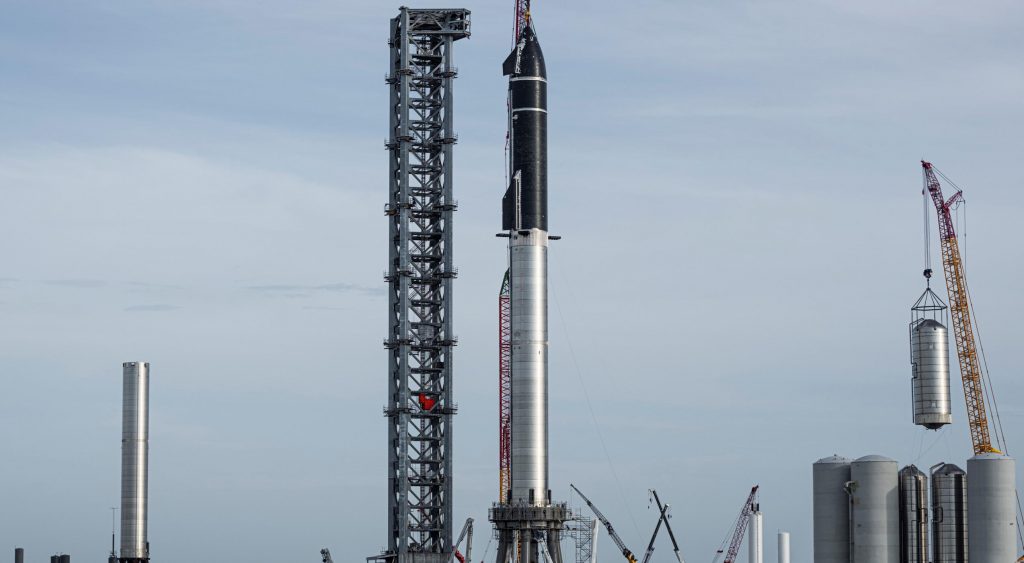
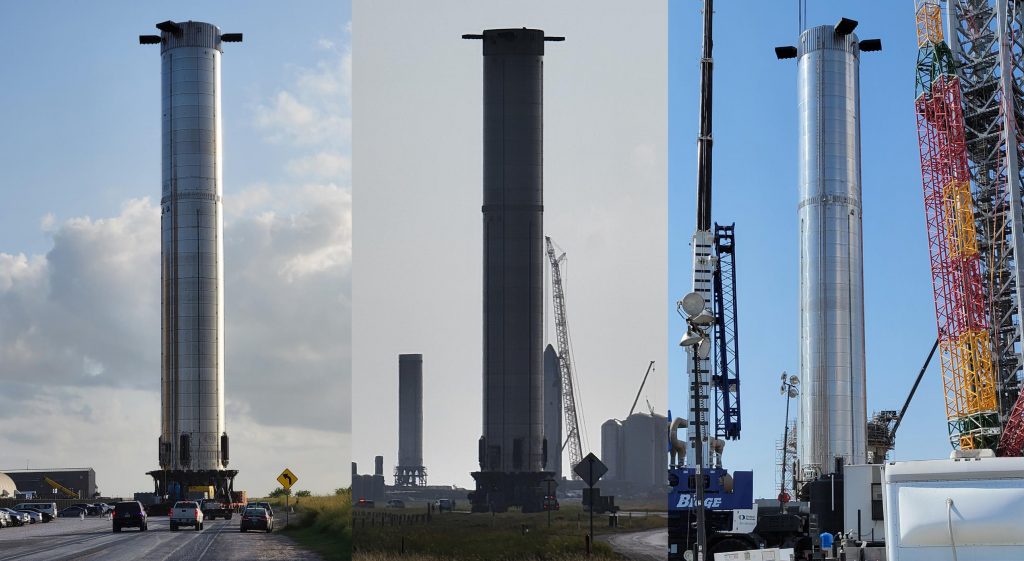
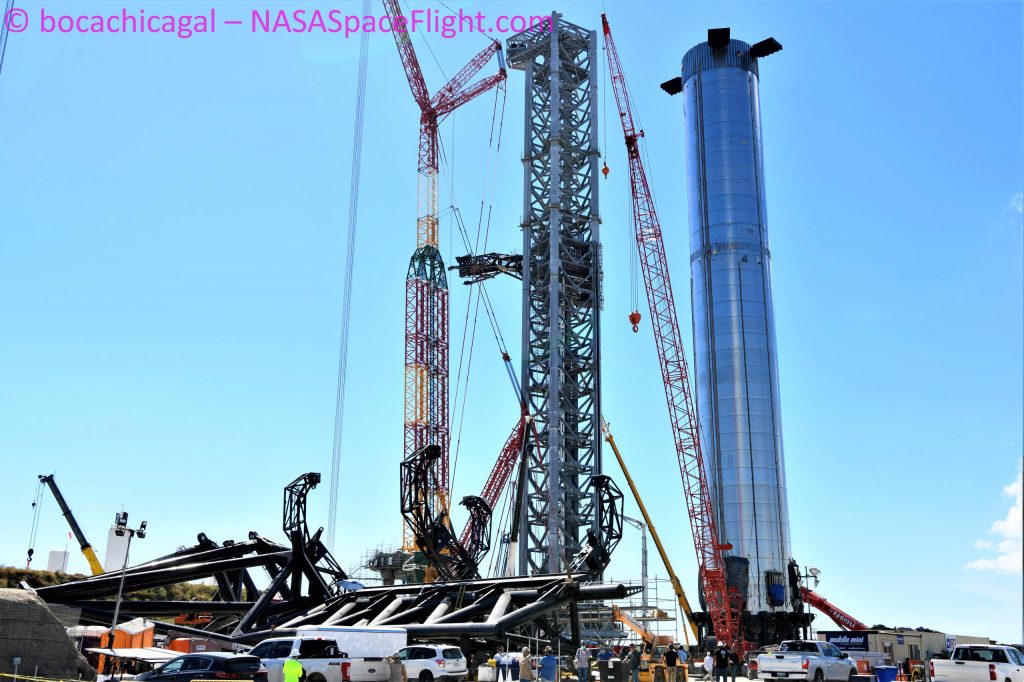
On September 26th, to give the Starbase construction crew more room to install giant arms on the orbital pad’s ‘launch tower,’ SpaceX removed Super Heavy B4 from the launch mount for the second time, temporarily relocating it to an unused patch of the pad’s old landing zone. Booster 4 hasn’t been moved since. However, while probably a bit slower than SpaceX would have liked, large-scale work on the Starship launch tower was effectively completed last week with the installation of two giant rocket-catching ‘Mechazilla’ arms.
A great deal of work has also been done on Starbase’s orbital tank farm over the last two months, including the installation of the last few storage tanks, the ‘sleeving’ of those tanks, a great deal of plumbing, and the start of real propellant deliveries. Save for a few days spent testing Starship S20 in late September and mid-October, the pad construction crews that have to evacuate the pad for 6-12 hours for every test have had three full months to work without interruption. Perhaps the most optimistic explanation for the unusually long gap between Booster 4 and Ship 20 rollout and testing is that SpaceX consciously chose to put off vehicle tests to avoid disrupting orbital launch site construction and retasked nearly all Starbase workers for that construction.
Regardless, with the launch tower and orbital tank farm now more or less structurally complete and work already underway to prepare the tank farm to support its first booster tests, most of the work that may have been drawing focus and resources away from ship and booster preparations appears to be wrapping up. That may be why, for the third time, SpaceX technicians began removing a number of Raptor engines from Super Heavy B4 around the start of October.
Aside from removing around a third to half of Super Heavy’s 29 Raptors, SpaceX also began slowly but surely installing parts of a steel heatshield designed to protect those engines during ground testing, ascent, and reentry. Newer Raptors have also been trickling from Starbase’s build site to the launch pad for installation on the booster and more engines will likely be (re)installed as heatshield installation progresses.
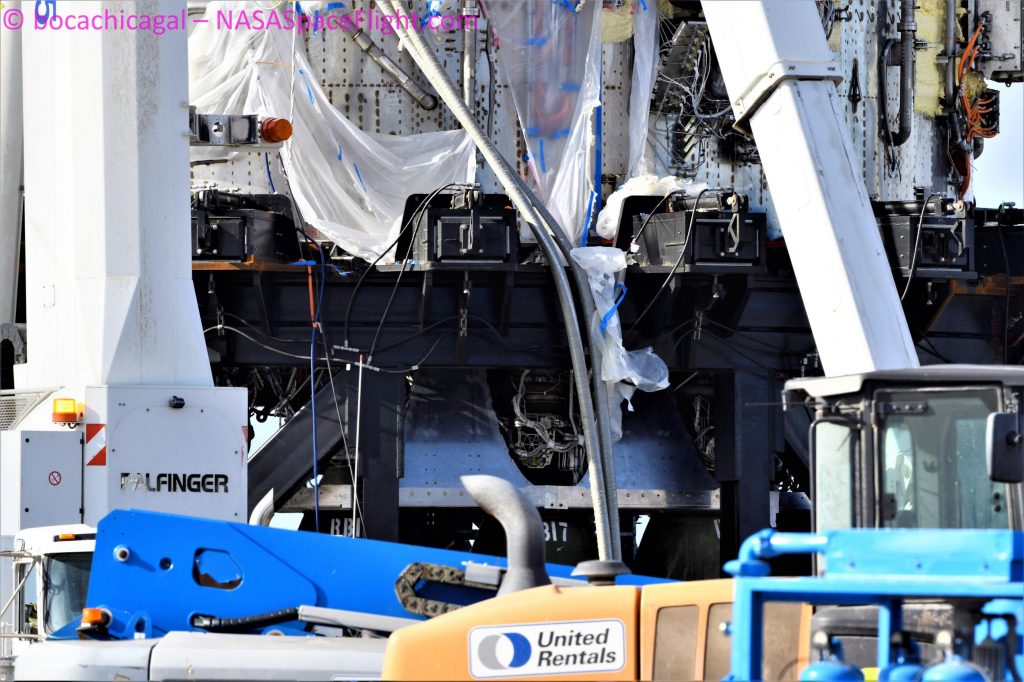
Perhaps the most unusual part of recent Super Heavy B4 work is the apparent application of some kind of foam around several racks of pressure vessels (COPVs), hydraulic manifolds, and umbilical connections installed around the booster’s base. Those racks will eventually be enclosed inside steel ‘aerocovers’ already staged beside Super Heavy. A number of Twitter users believe that the foam being selectively applied is for acoustic deadening – meant to protect sensitive electronics, valves, and computers from the brutal environment Super Heavy itself will produce at liftoff and during ground testing.
Ultimately, with Booster 4 work ramping back up and the zenith of orbital pad construction activity now likely behind SpaceX, preparations for major Super Heavy testing will hopefully resume. SpaceX has yet to perform a full Super Heavy wet dress rehearsal (WDR; fully filling a rocket’s tanks and performing a launch countdown) or fire up more than three Raptors on a booster or ship prototype. With any luck, that will finally change in the final months of 2021.

News
Tesla FSD approved for testing in Nacka, Sweden, though municipality note reveals aggravating detail
Nacka, Sweden, a municipality just a few miles from Stockholm, has given its approval for FSD tests.
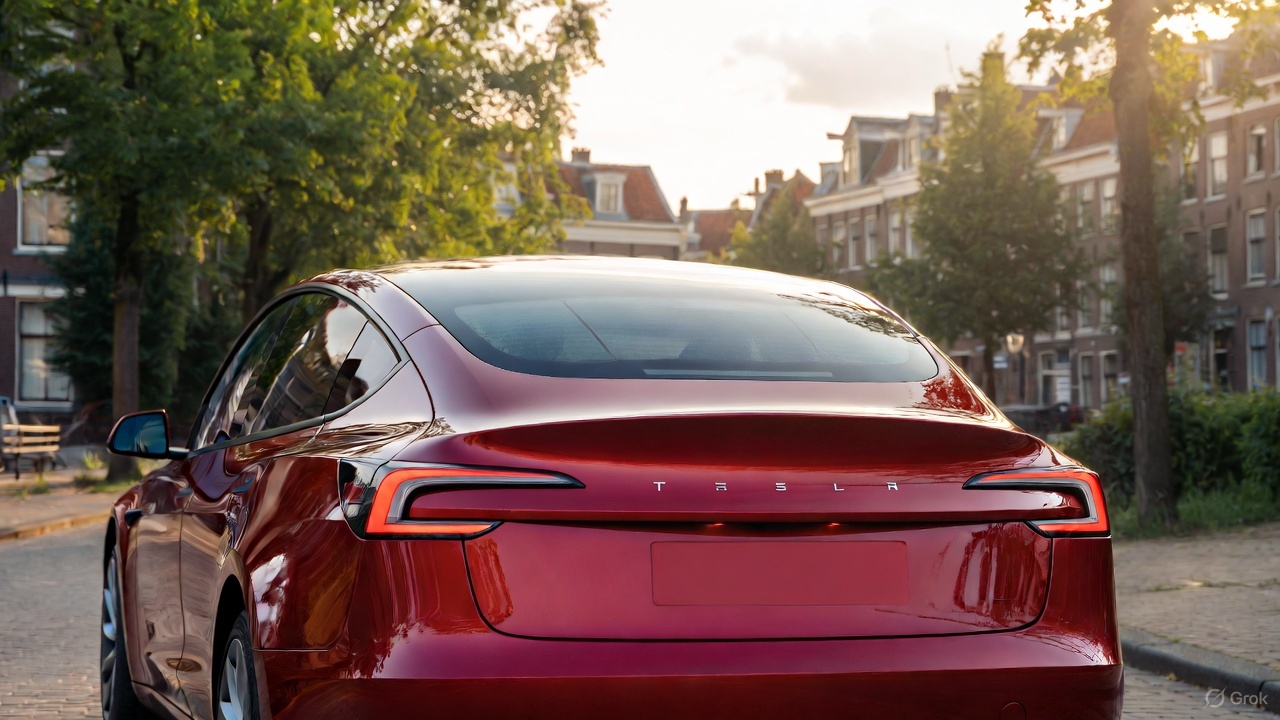
Tesla has secured approval for FSD testing in an urban environment in Sweden. As per recent reports from the Tesla community, Nacka, Sweden, a municipality just a few miles from Stockholm, has given its approval for FSD tests.
A look at the municipality’s note regarding FSD’s approval, however, reveals something quite aggravating.
FSD testing approval secured
As per Tesla watcher and longtime shareholder Alexander Kristensen, Nacka is governed by the Moderate Party. The shareholder also shared the municipality’s protocol notes regarding approval for FSD’s tests.
“It is good that Nacka can be a place for test-driving self-driving cars. This is future technology that can both facilitate mobility and make transportation cheaper and more environmentally friendly,” the note read.
The update was received positively by the Tesla community on social media, as it suggests that the electric vehicle maker is making some legitimate headway in releasing FSD into the region. Sweden has been particularly challenging as well, so securing approval in Nacka is a notable milestone for the company’s efforts.
Aggravating details
A look at the notes from Nacka shows that FSD’s proposed tests still met some opposition from some officials. But while some critics might typically point to safety issues as their reasons for rejecting FSD, those who opposed the system in Nacka openly cited Tesla’s conflict with trade union IF Metall in their arguments. Fortunately, Nacka officials ultimately decided in Tesla’s favor as the company’s issues with the country’s unions are a completely different matter.
“The left-wing opposition (S, Nackalistan, MP and V) voted no to this, referring to the fact that the applicant company Tesla is involved in a labor market conflict and does not want to sign a collective agreement. We believe that this is not an acceptable reason for the municipality to use its authority to interfere in a labor law conflict.
“Signing a collective agreement is not an obligation, and the company has not committed any crime. The municipality should contribute to technological development and progress, not work against the future,” the note read.
News
Tesla Model 3 and Model Y named top car buys in Norway
Despite growing competition from European and Korean brands, both models stood out for their balance of price, performance, and everyday usability.
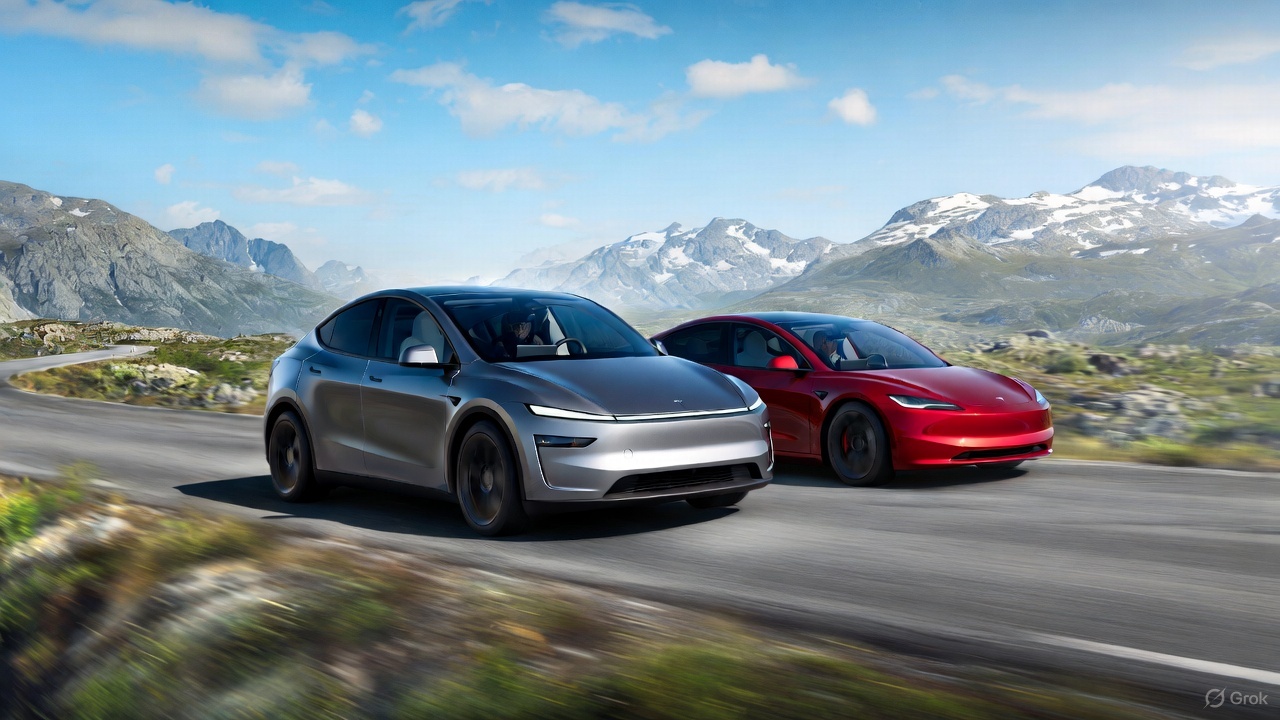
Norway’s annual roundup of the best car purchases featured Tesla’s two main sellers this year, with the Model 3 and Model Y securing top positions in their respective segments.
Despite growing competition from European and Korean brands, both models stood out for their balance of price, performance, and everyday usability. The verdict comes as electric vehicle adoption remained above 95% of new vehicle sales in the country.
Tesla Model 3 strengthens its value position
Among compact EVs, the Tesla Model 3 maintained its position as the best overall buy thanks to its strong blend of performance, efficiency, and updated features. Reviewers noted that every trim offered compelling value, especially with the all-electric sedan’s improved cabin ergonomics and the return of the turn-signal stalk, which was one of the few previous complaints among drivers.
The Model 3’s mix of long-range capability, low operating costs, and responsive handling has continued to set the benchmark for compact EVs in Norway. While competitors from Hyundai, Volkswagen, and Peugeot have narrowed the gap, Tesla’s price-to-capability ratio has remained difficult to beat in this segment, Motor.no reported.
“The Model 3 clearly offers the best value for money in the compact class, no matter which version you choose. Now it also gets the turn signal lever back. This eliminates one of the few flaws in a driving environment that many believe is the best on the market,” the publication wrote.
Tesla Model Y claims its crown
The Tesla Model Y emerged as Norway’s top family-car purchase this year. The latest refresh introduced improvements in ride quality, styling, and interior materials, allowing the Model Y to deliver a more premium driving experience without a substantial price increase.
Reviewers praised its spacious cabin, strong safety profile, and practical range, all of which reinforced its appeal for families needing an all-purpose electric crossover. The Model Y remains especially notable given its continued popularity in Norway even as Tesla faces declining sales in other global markets.
“The Model Y is back as the winner in the family class. The upgrade in the new year was even more extensive than expected. It is a slightly more elegant and significantly more comfortable Model Y that solidifies its position as Norway’s best car purchase in the most important class,” the Norwegian motoring publication noted.
News
Tesla Giga Berlin is still ramping production to meet Model Y demand: plant manager
Tesla Gigafactory Berlin has expanded to two full shifts, as per the facility’s plant manager, and a lot of it is due to Model Y demand.
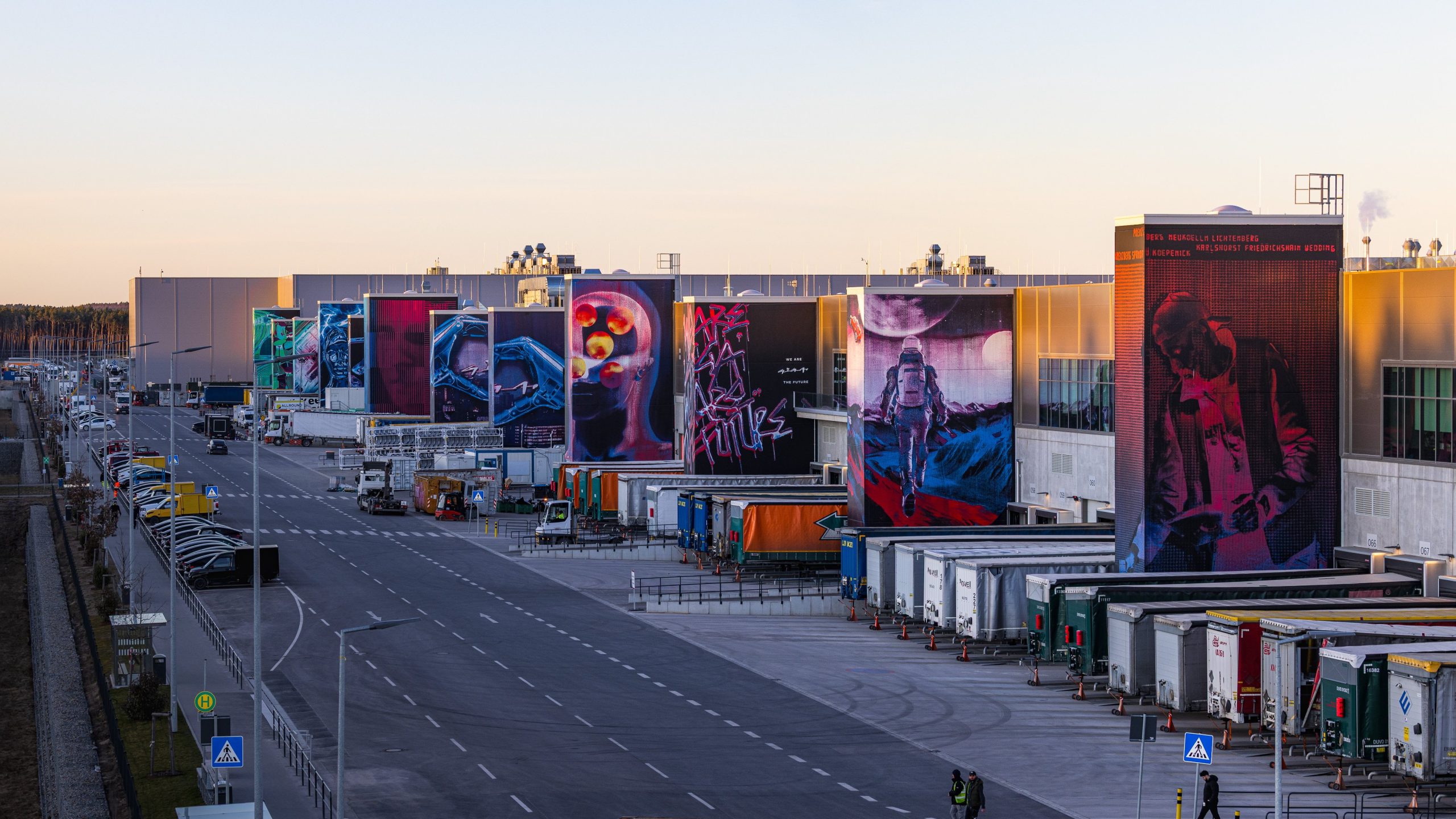
Tesla Gigafactory Berlin has expanded to two full shifts, as per the facility’s plant manager, and a lot of it is due to Model Y demand. While registrations in some countries such as Sweden have fallen sharply this year, the company’s sales in other key territories have been rising.
Giga Berlin shifts to two shifts
Giga Berlin factory manager André Thierig told the DPA that the facility has been running two shifts since September to manage a surge in global orders. And due to the tariff dispute with the United States, vehicles that are produced at Giga Berlin are now being exported to Canada.
“We deliver to well over 30 markets and definitely see a positive trend there,” Thierig said.
Despite Giga Berlin now having two shifts, the facility’s production still needs to ramp up more. This is partly due to the addition of the Tesla Model Y Performance and Standard, which are also being produced in the Grunheide-based factory. Interestingly enough, Giga Berlin still only produces the Model Y, unlike other factories like Gigafactory Texas, the Fremont Factory, and Gigafactory Shanghai, which produce more than one type of vehicle.
Norway’s momentum
Norway, facing an imminent tax increase on cars, has seen a historic spike in Tesla purchases as buyers rush to secure deliveries before the change takes effect, as noted in a CarUp report. As per recent reports, Tesla has broken Norway’s all-time annual sales record this month, beating Volkswagen’s record that has stood since 2016.
What is rather remarkable is the fact that Tesla was able to achieve so much in Norway with one hand practically tied behind its back. This is because the company’s biggest sales draw, FSD, remains unavailable in the country. Fortunately, Tesla is currently hard at work attempting to get FSD approved for Europe, a notable milestone that should spur even more vehicle sales in the region.









